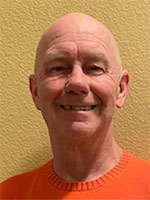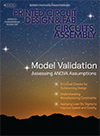Features Articles
 The designer’s (large) role to keep projects on track.
The designer’s (large) role to keep projects on track.
The restaurant industry has a saying, “Time to lean is time to clean.” The gist is that there is never a dull moment while the clock is ticking. Bearing in mind the importance of time, the PCB designer is often faced with the prospect of starting a layout before all the necessary data are on the table. A preliminary schematic and a rough outline are a step in the right direction but by no means the whole story.
That beginning may have been delayed while the schematic capture gets to a state where you have enough information to actually start the physical design segment. In the meantime, it’s always good to inquire about any new connectors or other components to get a jump on obtaining or creating the footprint for the library. These kinds of things are often left to the designer. Going to see the cognizant engineer – or at least chatting them up – will let them know you’re on the job and trying to push forward.
Electrical and mechanical engineers have a lot on their plate and can be spread thin. They can seem to have a high tolerance for risk when it comes to the schedule. That is, anything and everything can change at any time. The one exception is the tape-out date. This is the significant difference between a “waterfall schedule” and concurrent design.
 The infusion of AI into IoT infrastructures shows it’s vital to take cybersecurity seriously.
The infusion of AI into IoT infrastructures shows it’s vital to take cybersecurity seriously.
Although like many of us in this industry, I am fascinated by technology and curious to explore its possibilities, I am no hacker, well-intentioned or otherwise. Yet I do own a couple of gadgets, of course, available through reputable channels, that can sniff for open Internet ports and probe access-control systems, like hotel room keys. It’s got me thinking about the power of tools available to serious-minded hackers who devote their careers and considerable brain power to finding and attacking vulnerable targets online.
In the real, above-board world, we are placing increasing trust in the software applications that enable our lives, infrastructures, jobs and economies. And with the infusion of AI into all these applications, we know less and less about the mechanisms controlling them, or the values directing those mechanisms.
Keeping bad actors out is extremely important, especially as an increasing variety of cyber-physical systems – IoT applications – assist our daily lives at home, on the roads and in factories. As consumers, we enjoy legal protection against many types of cybercrime. We may not know when a connected device like an IP camera has been taken over and used in a botnet. These threats are abstract and virtual.
Using Lean Six Sigma to prioritize projects, optimize capex, and inform employee recognition.
Lean Six Sigma is a powerful tool for production teams committed to continuous improvement. Viewed as individual activities, however, the overall impact of the improvements it drives may not be obvious. The Continuous Improvement teams in SigmaTron International’s Tijuana, Mexico, facility address this with an annual review meeting that looks both at accomplishments over the past year and year-over-year trends. The top three teams are recognized for their accomplishments.
Watch out for the one who lives to throw a wrench in the works.
I have this idea. Rather than having the nuclear codes reside in the White House, they should embed with the American people on a rotating basis. Not unlike the Stanley Cup, which overnights in each offseason residence of the members of the NHL championship team. Do the same with the car keys to obliteration; move them from place to place nightly. Think of the possibilities: who will have the effrontery to keep up with the Joneses, especially when they have the power to unleash Armageddon with one push of a button? There goes the neighborhood, indeed. Think twice before criticizing their taste in wainscoting. Consider if the nuclear football kicked off in a house with Polish heritage and a long memory, still seething over the “stolen” Russian win in the gold medal game of the 1972 Olympic basketball tournament. Revenge is a dish best served with beer and hors d’oeuvres, watching live cable, and Poles do not fancy Russians. Talk about checks and balances. What could possibly go wrong with this exercise of grassroots democracy?
 Industry-wide security efforts could benefit from a smaller, more agile approach.
Industry-wide security efforts could benefit from a smaller, more agile approach.
One of the major trends, or more specifically, major needs, over the past decade is the quest to beef up security methods and protocols to protect intellectual property (IP) and secure the numerous long and global supply chains. As with any emerging trend, opinions are varied as to exactly what “security” means, as well as how to best define “supply chain.”
Over the past quarter century, the global supply chain has grown, prospered and become increasingly complex. The flourishing of such a complex and efficient manufacturing environment has required deployment of advanced technology – not just in how product is manufactured on the production floor but also in how data are transferred. Data include everything from Controlled Unclassified Information (CUI) to all the myriad details required to logistically make sure items and sub-items are shipped and arrive in time – anywhere in the world – at the required location for assembly. This is where the concept of security gets interesting.
 A top-down strategy is needed to change course.
A top-down strategy is needed to change course.
Both the Trump and Biden administrations have taken significant steps to bring manufacturing back to the United States. But realistically, when will this goal become feasible, and at what cost?
For domestic PCB buyers who currently rely on Asia for production, how much longer will they need to shoulder the burden of tariffs for boards that cannot be produced in the US within a reasonable timeframe?
In late May last year, the US Trade Representative announced another one-year reprieve from the 25% tariff on two- and four-layer rigid printed circuit boards. While this exemption applies to only a narrow portion of PCBs manufactured in China, it provides some relief to OEMs and EMS companies facing severe supply chain challenges. This short-term measure, however, does little to address the broader issues of manufacturing capacity and technological capability in the US.
Press Releases
- NEDME 2025 Draws Strong Northwest Crowd, Builds on Tradition of Regional Collaboration
- Cofactr Democratizes their Complete Procure-to-Ship Automation Service at a Pivotal Moment for US, Unlocking Support for Agile Hardware Manufacturers in America—with No Upfront Costs
- Semi-Kinetics Adds 2nd Pemtron X-Ray Inspection and Component Counting Capabilities as Part of California Expansion
- The Training Connection Continues to Grow with Addition of Veteran IPC Trainer Bill Graver


